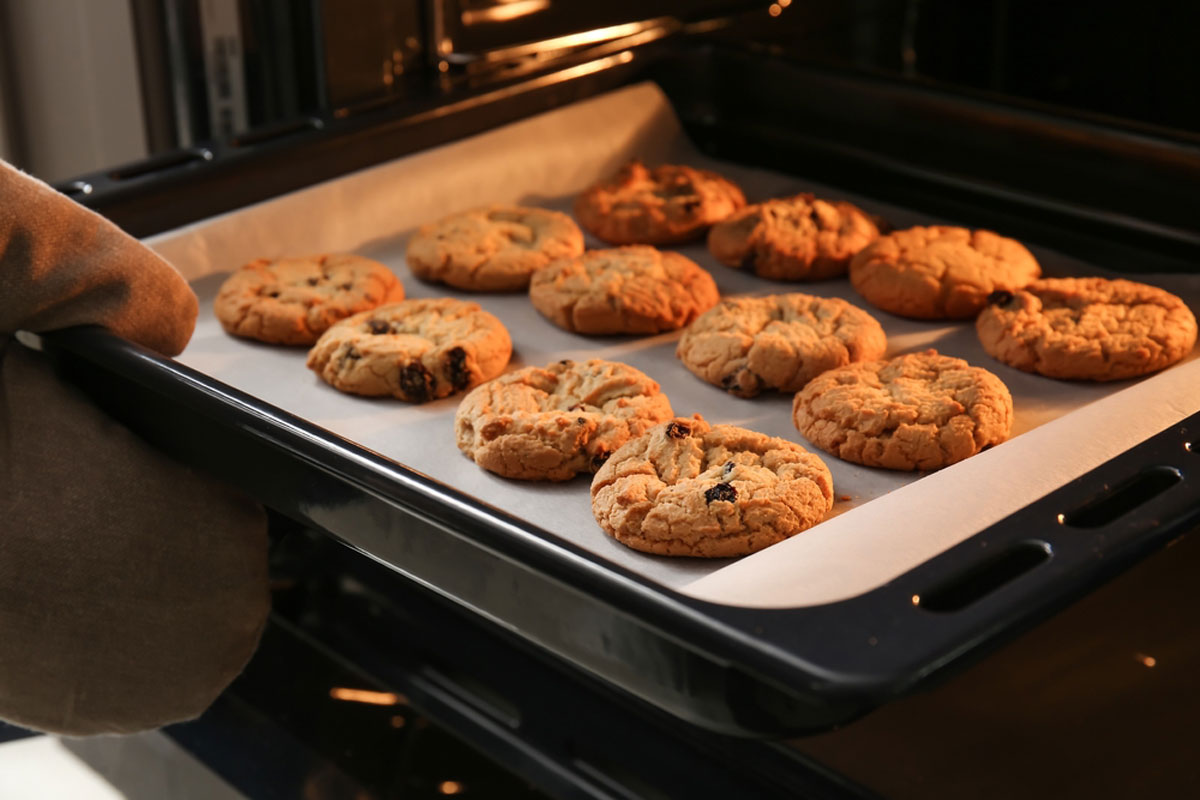Few things are as disappointing as pulling a tray of cookies out of the oven and finding they’ve spread into one giant, thin, crispy sheet. Preventing cookies from spreading requires a combination of the right techniques, tools, and understanding of your recipe. Here’s a comprehensive guide to ensuring your cookies keep their shape and look picture-perfect every time.
1. Measure Ingredients Accurately
Baking is a science, and slight variations in ingredient measurements can cause cookies to spread. Use measuring cups for dry ingredients and a digital scale for more precision. Pay close attention to the ratio of butter, sugar, and flour:
- Too much butter or sugar leads to excessive spreading.
- Too little flour provides insufficient structure.
2. Chill Your Dough
Warm dough spreads more quickly in the oven. Chilling it before baking helps maintain shape. Here’s how to do it:
- Refrigerate the dough: Chill it for at least 30 minutes, or overnight for best results.
- Freeze portioned dough balls: Scoop out your cookie dough, place it on a baking sheet, and freeze until firm before baking.
3. Adjust Your Butter
Butter’s consistency plays a crucial role in cookie spread. Here are some tips:
- Use room temperature butter (softened but not melted) for creaming with sugar. Fully melted butter can cause cookies to spread excessively.
- For recipes that call for melted butter, be sure to chill the dough thoroughly before baking.
4. Watch Your Oven Temperature
An incorrect oven temperature can sabotage your cookies. An oven that’s too cool gives the dough time to spread before it sets. Follow these tips:
- Use an oven thermometer to verify your oven’s accuracy.
- Bake cookies at the temperature specified in the recipe, usually between 325°F and 375°F.
5. Line Baking Sheets Properly
The surface of your baking sheet affects how much your cookies spread. Here’s what to consider:
- Use parchment paper or silicone baking mats for consistent results.
- Avoid greasing your baking sheets; excess fat can encourage spreading.
6. Mix Dough Correctly
Overmixing can incorporate too much air, leading to spreading. To avoid this:
- Cream butter and sugar just until light and fluffy.
- Add dry ingredients gradually and mix only until combined.
7. Use the Right Flour
The type of flour you use impacts your cookies’ structure. All-purpose flour works for most recipes, but for cookies that hold their shape better, consider:
- Bread flour: Higher protein content provides more structure.
- Chilled flour: Chilling flour before adding it to the dough can reduce spreading.
8. Don’t Overload with Wet Ingredients
Excess liquid in your dough can cause spreading. Keep an eye on:
- Eggs: Large eggs vary in size, so use what the recipe specifies.
- Additional liquids: If adding extracts, syrups, or juices, reduce them slightly if your dough feels overly wet.
9. Shape Your Dough Properly
The way you form your cookies impacts their final shape:
- Use a cookie scoop for uniform-sized cookies that bake evenly.
- Roll dough into tall mounds instead of flat discs; this helps reduce spreading.
10. Bake One Sheet at a Time
Overcrowding your oven can lead to uneven baking and spreading. If you need to bake multiple sheets:
- Rotate pans halfway through baking.
- Place one sheet on the middle rack for the most consistent results.
Common Issues and Quick Fixes
- Cookies Spread Too Much: Add 1-2 tablespoons of flour to the dough and chill it again.
- Dough Too Sticky to Handle: Chill longer or dust your hands with flour before shaping.
- Cookies Too Flat: Check your leavening agents (baking soda or baking powder) for freshness.
Conclusion
Perfectly shaped cookies don’t happen by accident—they’re the result of precise measurements, the right techniques, and attention to detail. By following these tips, you’ll have cookies that look as good as they taste. Now, it’s time to preheat your oven and bake with confidence!

